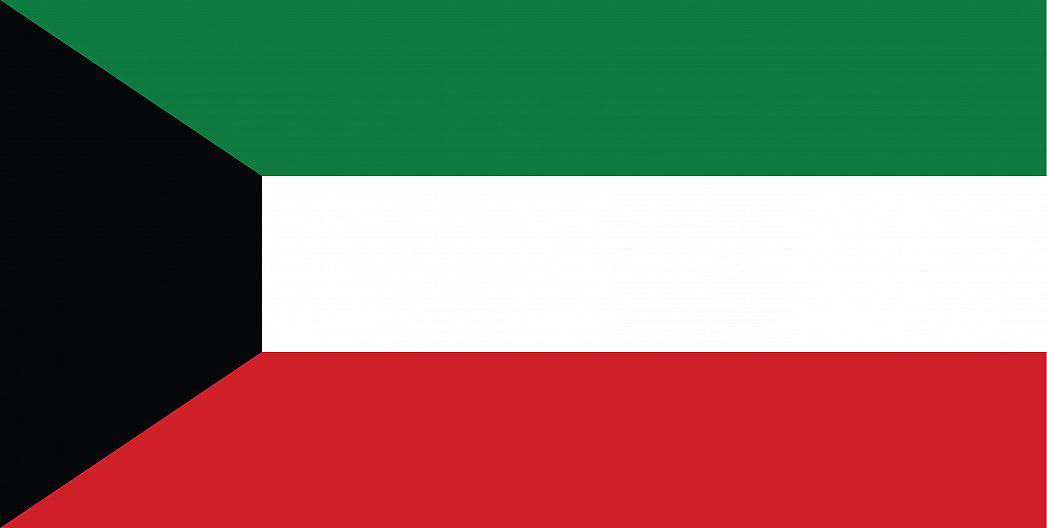Kuwait's flag consists of a combination of colors in a horizontally stripped format. The first stripe is green, the middle stripe is white and the bottom stripe is red. On its hoist side is a black trapezoid. The flag of Kuwait was officially adopted on September 7th, 1961. The first hoisting took place on November 24th, 1961.
The flag of Kuwait is composed of Pan-Arab colors of which each single color has a specific meaning and definition. The black on the left edge stands for the defeat of the enemies, the red represents the bloodshed on Kuwaiti swords during the struggle for peace and independence, and white is a representation of unity and order within the Kuwait nation. Finally, green stands for vegetation and fertile land of Kuwait. The flag of Kuwait also has specific hoisting rules which stipulates that the red side should be on the left side of the flag.
The Pan-Arab colors were inspired by a poet named Safīaddin al-Hilli. They are a population choice for flags flown in Arabian countries.
Before the adoption of the new flag of Kuwait in 1961, the initial flag was red with white inscriptions. However, before 1899, the flag of the entire Persian Gulf states, which included Kuwait, consisted only of the red field. Later, between 1899 and 1915, the flag was re-designed to include a crescent-shaped star and a name of what country it belonged to. In the case of Kuwait, its initial inscription letter on the flag was K. Between the years 1909 and 1915, some more modifications were made on the flag, the crescent shape got centered, and the country symbol reduced in size and moved to the top corner.
This page was last modified on May 1st, 2018
More on Graphicmaps

Published on 2019-11-06
What is a Trade Embargo?

Published on 2019-11-04
Which Two Countries Used to Have the Same Flag?

Published on 2019-09-16
What Is the Only Two-Sided State Flag?

Published on 2019-09-16
Which Country Flag Looks Like the Texas Flag?

Published on 2019-08-29
Flags That Resemble the US Flag

Published on 2019-08-20
